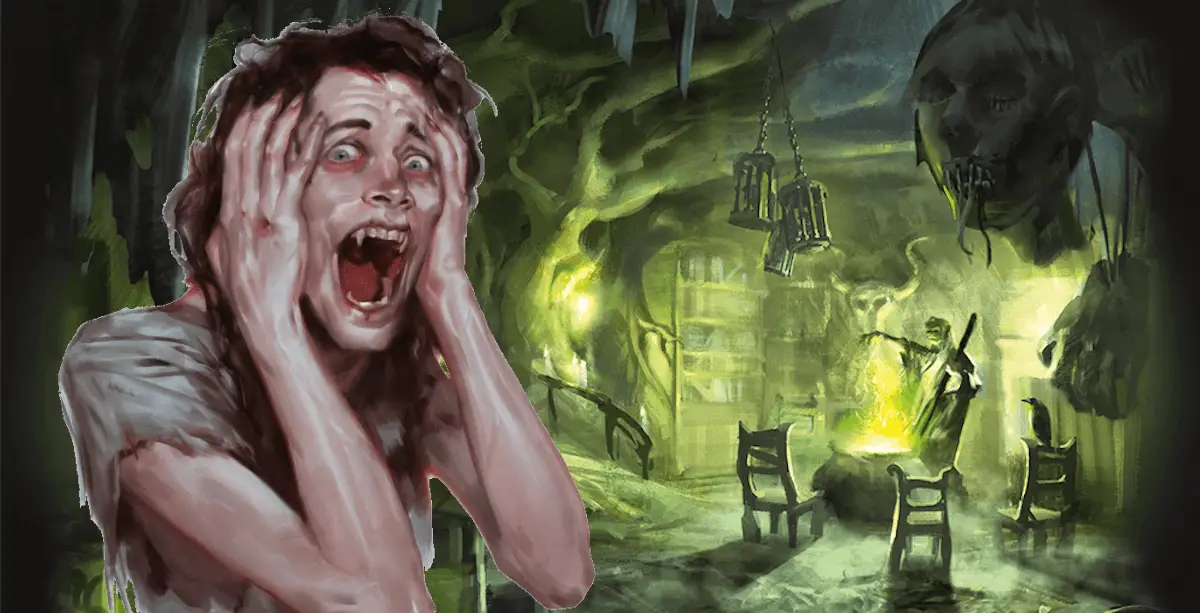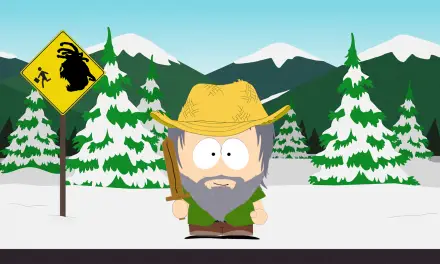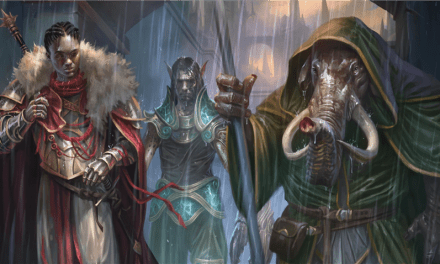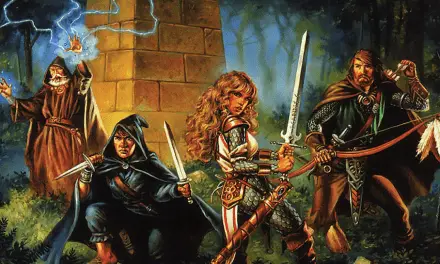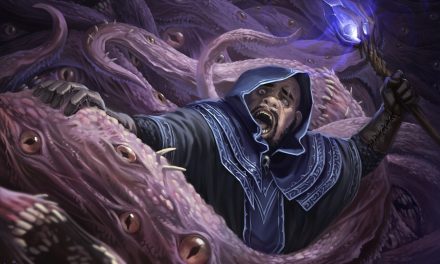There’s nothing quite like horror in D&D to really get inside your players’ heads and create memorable stories.
However, real horror is one of the most difficult feelings to get just right at the table. If you overdo it, it’s just campy. If you underdo it, it’s boring.
So today we’re taking a closer look at how to run a horror game in D&D.
Buckle up! There’s a lot to cover in this one!
What is Horror?
Let’s start at square one: what is horror?
At its core, horror is meant to frighten, scare, or disgust the audience (in this case, your players.)
Horror themes commonly include the macabre and the unsettling. These stories play on suspense, expectations, and a sense of helplessness.
Horror is a Personal Thing
As a genre, it’s almost impossible to create a singular definition for what horror is. Because horror plays so heavily to the emotions of the audience, it becomes a very individualized thing. Naturally, this has led to a seemingly infinite amount of horror sub-genres.
What creates those feelings of fear, shock, or disgust in your players?
Is it psychological horror like The Shining? Possibly “body horror” like The Fly or The Thing? What about paranormal horror, monster horror, or Lovecraftian cosmic horror?
One person might find the classic 80s slasher movies to be the definition of horror. Another person may cite classic literature like Mary Shelley’s Frankenstein or Bram Stoker’s Dracula. Yet another person may reference newer mediums like video games (such as Outlast or Silent Hill) as the definitive horror experience.
And that’s exactly the point!
Horror is most defined by how we experience it and the feelings that that experience create.
Because of this, D&D (and most tabletop RPGs for that matter) can be perfect mediums to share an interactive horror story. Because tabletop games rely so heavily on the “Theatre of the Mind,” the odds are in the favor of the Dungeon Master who is guiding the players through the horror story.
The DM just has to stick to certain rules of thumb to do their job and create those feelings of dread in their players. It’s not easy, but well worth it when done correctly!
The Challenge of Running a Horror Game in D&D
I suppose it’s wise to go ahead and address the undead elephant in the room: your group may not be conducive to running a horror game.
The biggest challenge when trying to run a horror game in D&D is getting your players to all “buy in” to what you’re creating.
In theory, everyone has agreed that they want to play a horror game. They’ve done this because they want the same feeling that they get when watching a horror movie: adrenaline, tension, and fear.
But the typical horror movie isn’t as long as a single D&D session. No horror movie is as long as an entire D&D campaign. People get distracted.
If you aren’t playing with a group of thespians (and even then, it’s dicey), the horror vibes can be ripped away in no time at all. One joke or distraction can instantly undo hours of work building the tension to get it just right.
At the end of the day, you’re not actually trapped in the haunted castle of a mad scientist. You’re sitting around a table and rolling dice with your friends!
It’s the DMs job to create the immersion that the players want. But it’s also on the players to respect the feeling that the group is trying to create.
Time and time again, keeping this feeling is the single most difficult part of attempting to run a horror game in D&D.
Good Horror vs Bad Horror in D&D
As I mentioned at the beginning of this article, running a horror game in D&D is about balance.
Overdoing it leads to a campy and over-the-top experience. This can be fun in an Evil Dead kind of way, but is that the feeling that you’re going for?
On the other hand, if you don’t add enough into your horror game, it will be boring. That’s when the cell phones come out and people start scrolling Instagram instead of engaging with the story.
You want to find that Goldilocks spot. Not too much and not too little. It should be just right!
What is Good Horror in D&D?
Good horror engages the senses. So much of D&D takes place in the players’ minds that you as the DM are able to help them build pictures of what frightens them the most. We’ll touch more on description in just a little bit.
Good horror feels real. You’re able to create genuine emotions in everyone at the table. We aren’t necessarily going for jump-scares when running a horror game in D&D. We’re building tension and maintaining it so that everyone has that tingly sensation on the back of their necks.
What is Bad Horror in D&D?
Bad horror doesn’t engage the players. Descriptions are bland and uninspired, enemies come off as no different than non-horror creatures, and the story either drags or makes no sense.
There should not be terrifying creature around every corner. However, there should be the threat of a terrifying creature around every corner. But at some point, there absolutely must be a terrifying creature around the corner.
Think of tension in horror as a type of promise.
At some point, the Vampire is going to attack you.
As the characters religiously check every corner, they will find nothing and eventually lower their guard. That is when the Vampire will attack.
If there is not a Vampire attack, you have lied to your players. If there is a Vampire attacking them every time they open a door, you have robbed your players of the tension that they want.
Bad horror robs and lies to the audience/players.
The 5 Elements of Good Horror
Good horror has five key elements to it. You may not always be able to adhere to all of these elements, but you should make it a point to maintain all five to truly engage the players.
The five elements of good horror are fear, suspense, surprise, mystery, and foreshadowing.
Let’s look a bit closer at each of these.
Fear
Fear is being forced to face something that you would prefer to avoid. This may include feelings of being helpless or trapped in which the only way to escape is to move through the thing that is causing the fear.
The party is trapped in an underground labyrinth. They don’t know how long they’ve been walking or if they’re just walking in circles. It’s not possible to return from the direction that they came from.
The only way to escape the labyrinth is to move through it.
Suspense
Suspense is the anxious feeling of something that might happen. It’s knowing that a threat exists, but being uncertain about what form the threat will take.
From deep within the labyrinth, the party hears a blood-curdling scream alongside the loud and bellowing roar of… something big…
From time to time, they hear its heavy footsteps getting nearer. But suddenly they stop and seem to reappear elsewhere in the labyrinth.
Surprise
Surprise is exactly that: something unexpected occurs.
The footsteps in the labyrinth have stopped. It’s been two hours now or maybe three since the party last heard them. They turn corner after corner and haven’t encountered a single soul.
As their guard is let down, the party turns a corner only to be faced with a man screaming at them and grabbing at the paladin for dear life.
“Please! You have to help me! They’re coming!” the man yells as the characters (and hopefully players) all jump in shock.
Mystery
Mystery is that threat of the unknown. It’s those questions to which there may not be answers. Because things cannot be readily explained, the players’ minds attempt to find explanations.
More often than not, the players’ imaginations will make the mystery more terrifying than whatever the truth is. Mystery plays exceptionally well with suspense!
What is the creature in the labyrinth? How many others are trapped in here? What does it do with those that it finds? How long will we be stuck in this maze?
Foreshadowing
When used sparingly, foreshadowing can be the perfect touch to tie aspects of a story together. When the players realize in hindsight that the answer was right in front of them, they’ll be even more frightened.
Consider the movie Psycho when Norman Bates says that his mother is “as harmless as one of those stuffed birds.” The audience does not yet realize that Bates’ mother is dead and that Bates, himself, is the one behind the murders. Upon learning the film’s twist, this foreshadowing adds even more terror to the Bates Motel.
One of the party members in the labyrinth remembers a cryptic message given to them several sessions ago by a fortune teller. The fortune teller claimed that the party was lost, but not as lost as they will be. Perhaps even more terrifying was when the Fortune Teller claimed that a powerful beast will hunt them until they can no longer keep their eyes open.
How Horror Works
Horror works by stimulating the imagination in just the right ways to get the mind to make up its own worst-case scenario. With the right sensory inputs, the mind begins to prepare for oncoming danger. We become hyper-focused and our senses open to react to the danger. Adrenaline begins rushing so that we are able to react quickly.
By creating this feeling and maintaining it by keeping the danger near but not present, we create worse and worse situations. This is where the power of horror comes in.
The monster is never truly as terrifying as we build it up to be in our heads. It’s the build-up that makes us scream and react when the monster shows itself. That feeling of never quite being perfectly safe and the fear that letting down our guard isn’t an option means that every single detail is taken into account in the imagination.
Description is Key to Running Horror in D&D
If running a horror campaign, make it a point to be as descriptive as possible. The environment (both in-game and out-of-game) sets the mood for the story.
Engage all five senses in your descriptions to get that “buy in” from the players. Once their imagination kicks in and you keep giving solid descriptions, you’ll have momentum on your side as you continue to weave the story.
Personification really helps with this. By describing objects and occurrences with human characteristics, you are able to sow a level of paranoia in with the party while also painting a more vivid picture.
The old manor is not just worn and sagging. Rather, the house sags and leans inward as if it is disgusted with what it has become and wishes only to be either loved once more or destroyed.
Put all together as an example, you might say something along the lines of:
As the party enters the cursed crypt, describe the musty smell of the air as they pry the door open. The dust and mildew mix to create a smell so foul that it can be tasted. The skittering of a swarm of cockroaches can be heard as the party’s torchlight shines into the long-sealed corridor. Cobwebs, as seemingly empty and abandoned as the crypt itself, cover the walls and arch the doorway. A particularly cold breeze emanates from inside the crypt and seems to embrace each party member as if sizing them up one-by-one in search of weakness.
The Horror Atmosphere
Take special care when preparing your table for your horror game.
Things like dim lighting or candles add mood to the room.
For DMs, stay serious in how you present yourself when running a horror game in D&D. You should run the game while keeping an air about you as if you have a terrible secret that you are not revealing.
Reference the cast and set of Geek & Sundry’s “L.A. By Night” for an example of how this looks.
See the dark colors that they use for décor with dim lighting and Jason Carl’s peculiar personality when running the game.
Players don’t have to dress up as their characters, but it certainly never hurts!
Know Your Players
Knowing your players goes both ways when running a horror game in D&D.
On one hand, you want to get a feel for what uniquely affects each individual at the table. Pay special attention to describing details that you know will trigger their horror-response.
If someone at the table is particularly freaked out by body horror, you might describe the transition as the Oni drops its human disguise in more detail. Rather than just having the disguise fade away, try something like:
“You watch as the forester’s eyes turn a dark gold color. His smile stretches and seeming to rip at his cheeks as his inhumanly large mouth full of razor sharp teeth grimaces back at you. His skin turns a sickly blue color as he grows in size bit by bit. Matted black hair hangs down over his face as he lets out a laugh. Towering over you, the last remnants of the forester’s face shed from the creature as it raises its massive glaive to attempt to strike at you.”
On the other hand, however, knowing your players goes both ways.
In running a horror game in D&D, we want to get in the players’ heads and stir up emotions. But despite being a game, there are real-world triggers that people have that we should be respectful of. It is one thing to scare someone for fun, but crossing those boundaries is not fun.
Horror game or not, everyone is still there to have fun.
It is especially important to have a discussion about campaign expectations before running a horror game. Tell the players that you want to tell a horror story, but that you don’t want to cross any boundaries for people. If there is something that they are absolutely not comfortable with, you should absolutely not include it in the game.
In other words, do not attempt to scare players in ways that you do not have consent to scare them.
Under no circumstance is this okay.
Using Humor and Beauty to Make Horror More Powerful
There is a strange relationship between humor and horror.
Even the grimmest of storylines needs some kind of relief from time to time.
If every single thing in your horror campaign is just dark, lifeless, and depressing, the sensation will lose its charm.
However, an NPC with a habit of making macabre jokes might be just enough comedic relief to grant a moment of reprieve for the party.
With no breaks from the tension, you risk losing it all. By taking moments to use humor in your campaign, you are able to draw more severity to the serious moments.
If humor is not your strong suit, the same effect can be achieved by describing something beautiful or hopeful.
While the land has been ravaged by the zombie hordes that have destroyed most villages the party has seen, they may have a moment away from the zombies. Looking over a still lake with a surface that seems to be made of glass reflecting the jagged mountains above, a scenic moment gives the players a chance to breathe and gather themselves.
Learn From the Masters
It would be virtually impossible to create a comprehensive list of all of the resources that you can use as inspiration for running horror in D&D.
Movies, books, video games, old radio shows, folklore… Horror is all around us!
The masters of the horror genre have refined the techniques in such a way that there is no shortage of material to draw inspiration from. This is by no means a comprehensive list, but a general starting point to get your creative juices flowing!
Books
H.P. Lovecraft is mandatory reading if you plan on using entities like Aboleths or Great Old Ones in your story. His stories show a deep and cosmic horror that can be used to terrify your players with dangerous cults and horrifying entities from beyond the realm of mortal sanity.
Related: Running Cosmic Horror in D&D
My personal favorite master of horror, Edgar Allan Poe, can serve as inspiration for any horror campaign. Foreshadowing and suspense are used by Poe to incredible effect and his descriptions keep the reader drawn in to the story. With macabre and darkly romantic themes in addition to a mastery of dramatic irony, you need to read Poe in preparing to run a horror game in D&D.
Contemporary horror writers like Stephen King and Clive Barker prove that it is still possible innovate in the horror genre. Both writers bring strong premises to their stories and execute them marvelously. King’s style has a way of making the horror deeply personal in ways that often reflect a type of trauma for the protagonist. Barker is not afraid to get incredibly dark with his stories and strongly uses his descriptions to shock the reader with mental images of some of the darkest horrors in modern writing.
Film
With films like It and Hellraiser (a personal favorite horror movie), I have to start this section by continuing to recommend Stephen King and Clive Barker’s work.
When getting inspiration to run a horror game in D&D, look to classic horror movies in particular. (I’m greatly oversimplifying, but we’ll consider anything pre-1970s as “classic horror” for this article.)
These films did not rely on jump-scares to terrify audiences. They relied heavily on the design of the set and the dynamic portrayals of the characters to terrify audiences. Great classic horror films to look for are The House on Haunted Hill, Frankenstein, Night of the Living Dead, Psycho and Rosemary’s Baby.
The 70s and 80s both formed a type of heyday for “slasher flicks.” Many of these characters have become household names as a result of the immense popularity of the genre. Freddy Krueger from A Nightmare on Elm Street, Jason Voorhees from Friday the 13th, and Leatherface from The Texas Chainsaw Massacre are all prime examples of how a singular killer can function in a story.
That said, I would argue that it’s impossible to do a “slasher flick” vibe in D&D. These films rely on the helplessness of the protagonists against the killer. I’m just saying that Leatherface would not have been so terrifying if one of the characters launched a fireball at him. The characters from these films can make for great inspiration for your own sub-plots or side villains, but this sub-genre of horror is the hardest to incorporate into your D&D games.
I could go on forever about this, but I’m worried that I’m going on too long. In short, there are tons of films in every conceivable horror sub-genre that you can study for inspiration. Pay special attention to how the scenes are set up, the use of lighting and otherwise-small noises for dramatic effect, and how the inevitable “reveal” is set up.
For a more comprehensive list of horror films to inspire you, here’s a link to Rotten Tomatoes’ 200 Best Horror Movies of All Time.
Stephen King’s Types of Horror
Stephen King is wildly respected as one of the most talented and prolific horror writers in history. Even if you haven’t read one of his books or seen one of the movies based on his work, you know his creations. Pennywise the Clown in It, Jack Torrance in The Shining, Cujo in Cujo, Carrie in… well… Carrie.
King’s imagery is so vivid and his work feels so real that it’s hard not to get sucked in.
So it’s worth examining what the King of Horror has to say about the genre!
In his book, Danse Macabre, (which you absolutely owe it to yourself to read) King expertly lays out the nature and mechanics of the horror genre. In this explanation, King outlines three types or levels of horror and demonstrates how they work. To truly master the art of storytelling and running a horror game in D&D, you absolutely must read Danse Macabre.
The three types of horror, according to King, are The Gross-Out, The Horror, and The Terror.
Let’s take a closer look at each of these and how they can be used when running a horror game in D&D.
The Gross-Out
We start with King’s lowest tier of horror, the Gross-Out.
This is the presence of things that are meant to disgust and revolt your players. This might manifest as a river of blood, some kind of mad science experiment like the Human Centipede, or other such things that are meant to make you gag.
The Horror
The next tier of King’s types of horror is what King calls just that: the Horror.
This is when your players see something so unnatural or implausible that it causes genuine fear. Many of the more horror-themed monsters in D&D 5e dwell here naturally. Zombies, Flesh Golems, Giant Spiders, and Beholders are all examples of creatures that are immediately ready to be used at this level of horror.
As with all horror, description is key here. Calling special attention to the crude stitching of the Flesh Golem or the manner in which the giant spider readies its fangs before striking cements the image in the players’ minds.
The Terror
The highest level of horror is that of genuine terror. When running a horror game in D&D, this should be your goal.
Perhaps the strangest aspect of this level is that the players will do most of the work for you. You provide hints and ominous suggestions that prompt their imagination to fill in the blanks. By calling attention to the unknown and giving it significance, the Terror sets in for each individual player in a deeply personal way.
I love Stephen King’s example of this level so much that it would be a disservice to not just quote him.
King gives an example of Terror by saying that it is “when you come home and notice everything you own had been taken away and replaced by an exact substitute. It’s when the lights go out and you feel something behind you, you hear it, you feel its breath against your ear, but when you turn around, there’s nothing there…”
The power of Horror lies in chaos that the Terror level creates. Our minds will always try to make sense and order of things no matter how unnatural they may seem. If we aren’t able to make sense of something unknown, we begin to experience Terror.
The 5 Tips for Running a Horror Game in D&D
So let’s recap a bit with the 5 key tips to running a horror game in D&D.
- Use vivid description. Horror relies on clear mental images to scare your players.
- Get the Players to buy in. For Horror in D&D to work, the group can’t be cutting jokes constantly. You have to set the right atmosphere.
- Make it personal. Figure out what will most horrify each individual player at the table and weave that into your descriptions.
- Respect boundaries. Everyone playing a horror game wants to get scared, but they shouldn’t be made to feel genuinely uncomfortable or traumatized. If someone says they don’t want a certain theme in the game, respect that with no questions asked.
- Give breaks. It doesn’t work if it’s nonstop horror. There should be moments of rest or even humor to pull away from the horror. This makes it hit harder the next time the horror starts happening. Remember: balance is the key to good horror in D&D!
Conclusion – How to Run a Horror Game in D&D
Horror has a special power in D&D, but it requires more than the typical story to deliver a spectacular emotional thrill.
If you stick to the 5 tips we covered and do your homework to learn how horror really works, you will find yourself running terrifying games that your group will remember forever!
Personally, I strongly recommend Curse of Strahd as a fantastic option with lots of guidance to get you used to running a game with the Gothic Horror theme. It’s one of the best modules released for D&D 5e with lots of opportunities for you to experiment without fear of losing track of the story.
Once you’ve got that down and want more room to explore using horror in your games, Icewind Dale: Rime of the Frostmaiden is perfect!

